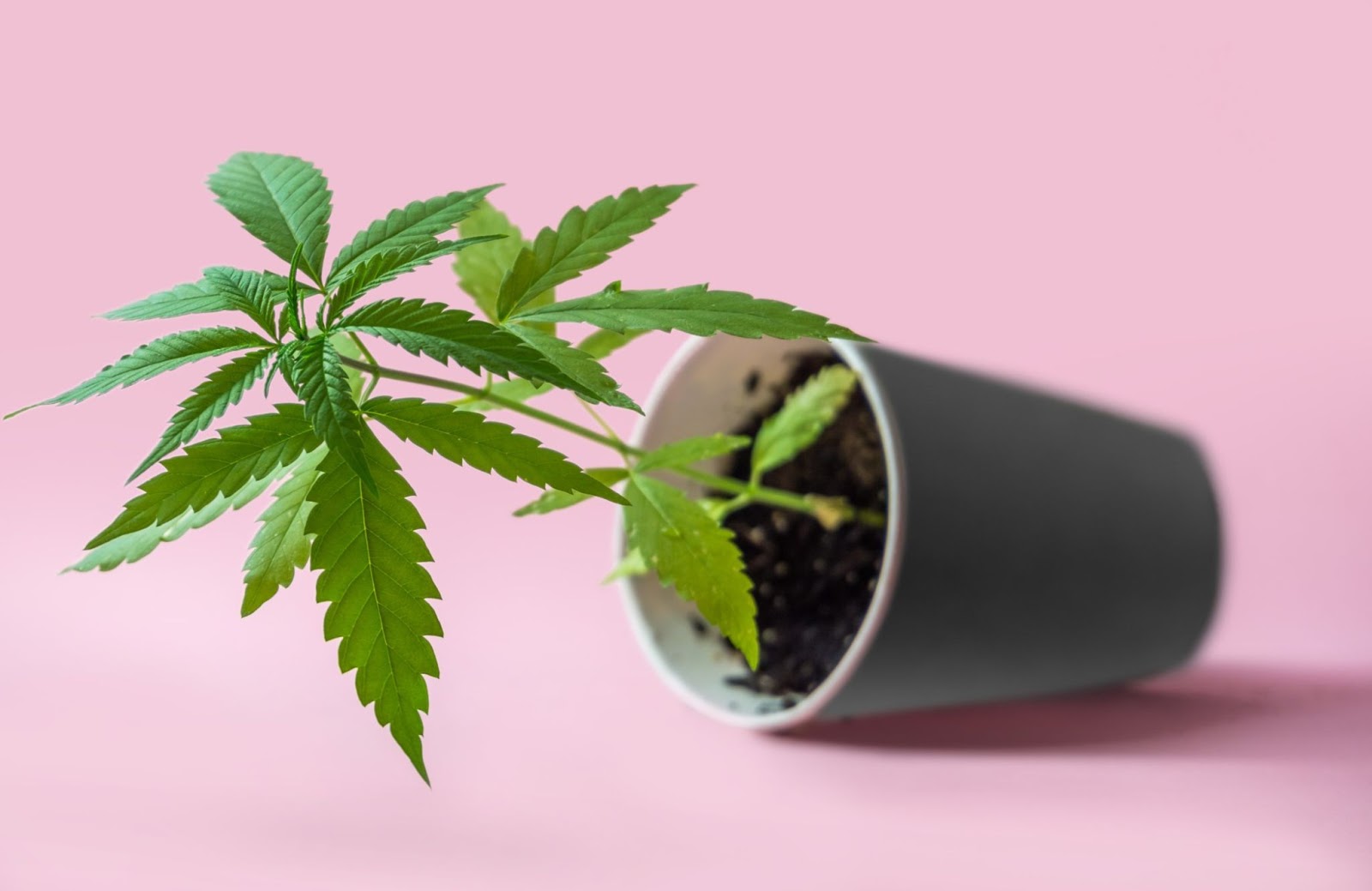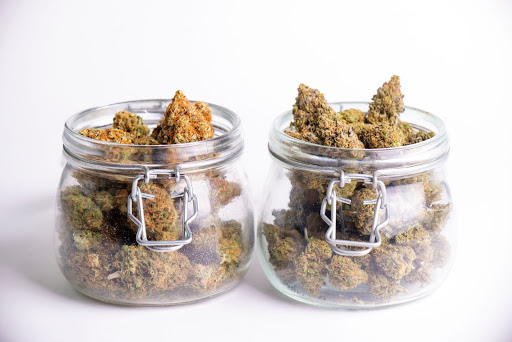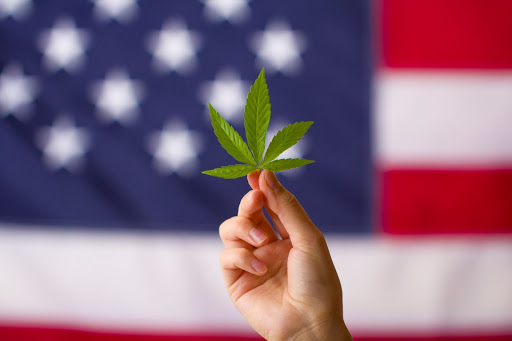Cannabis has a troubled history. For centuries, the plant has been stigmatized, condemned, and the target of anti-drug propaganda. Because of this, it’s left behind some strong misconceptions. Even with legalization happening across the country, the roots of these myths go deep.
Additionally, the lack of research has led to misinformation even among cannabis enthusiasts – albeit harmless compared to the other beliefs. Regardless, we’re here to set them all ablaze. Here are 8 myths about cannabis that simply aren’t true:
1. All cannabis produces the same high.
Most people know about the different cannabis strain types: Indica, Sativa, and Hybrid, a mix of the two. These 3 main categories create varying bodily effects. Flower from Indica plants tend to produce mellow, relaxing highs. On the other hand, users who consume Sativa report feeling more energetic, creative, and alert. Hybrid, since it’s a mix of the two, can cover a spectrum of these effects.
However, strain type is just one factor that goes into how you’ll feel when you consume cannabis. There are several other things to consider, including consumption method, cannabinoid content, and terpene profile. How you ingest your cannabis, such as smoking vs. vaping, will affect the onset, length of your high, and how intense it may feel.
Along with this, it’s important to consider the cannabinoid content. This is the amount of THC and CBD in your product. Knowing the difference between the two can help you find your desired effects, whether for recreational or medical use.
Lastly, and probably most importantly, is your body chemistry. Cannabis, like anything else, is not a one-size-fits-all. Budtenders will happily give recommendations based on your preferences, but it’ll all come down to trying it and seeing how you feel.
2. Marijuana is a gateway drug.
Cannabis is often labeled as a “gateway drug,” meaning using it could lead to trying other substances. The term was popularized in the 1980s but resulted from a long-winded stigmatization that started many decades before. The gateway theory goes: Once people try cannabis, they’ll want to experiment with other drugs. So, if cannabis is legalized, it could push people to try harder drugs.
The answer to “Is marijuana a gateway drug?” is a bit more complicated than a simple yes or no. In short, there’s little evidence to back up claims of the gateway theory. It’s true that many users of illicit drugs have tried cannabis before using other substances. However, that alone isn’t proof that it caused them to do other drugs. Other factors like lifestyle, social circles, genetic predisposition, and a myriad of other things could lead people to try other substances.
One proposed explanation for this is that cannabis, like alcohol and nicotine, is more accessible and affordable than other substances. So if someone is going to do drugs, they’ll likely start with something they can find easier.
Additionally, it’s shown that most drug users begin with alcohol and nicotine, even before trying marijuana, thus disproving that cannabis is the “gateway” to harder drugs. With this logic, both alcohol and nicotine would be considered the cause for people trying other substances. Even more so, further research shows that cannabis can actually help lower opioid addiction rates. One 2014 study concluded that “medical cannabis laws were associated with a mean 24.8% lower annual rate of opioid overdose deaths.”
3. The higher the THC content, the better quality the weed.
Of course, “better” is subjective. However, potent cannabis doesn’t always mean it’s higher in quality too. Some strains may be lacking in flavor, missing the desired effects, or cultivated in a way you don’t prefer.
Additionally, higher THC content doesn’t always mean it’ll get you higher either. In a study by the University of Colorado, researchers documented the experiences of 121 cannabis users after consuming cannabis at varying potencies. Users who used 16 percent THC vs. 24 percent THC had nearly identical measures of cognitive function, mood, balance, and even self-reported “highness.” However, even though their THC levels were elevated, they weren’t necessarily higher than the lower THC group.
As mentioned earlier, your high will depend largely on your individual body chemistry. There are many other factors at play other than THC. If you’re looking for high-quality weed, learning how to read a cannabis label or learning about extraction methods may help you in your search.
4. Stoners are lazy.
The stereotype that stoners are couch potatoes, or lazier than the average person, is simply untrue. While the media might depict this myth, the truth is that cannabis consumers are actually more likely to be active. In fact, some studies found that cannabis consumers on average have lower rates of obesity and increased exercise rates.
5. Legalization has increased crime rates.
One of the biggest oppositions to federally legalizing cannabis is that it will increase crime rates. This idea stems from racist ideologies in the 1920s and 30s, when Mexican immigrants began to enter the U.S., introducing the use of recreational marijuana. The plant became associated with immigrants, and the prejudice about foreigners then became associated with marijuana. Anti-drug campaigns warned against cannabis, and the crimes during this time were attributed to weed and the immigrants who used it.
However, new research in legalized states shows this is untrue. For example, in Nevada, violent crime decreased by 178 crimes per 100,000 post‐legalization. On the other hand, in Massachusetts, the violent crime rate increased by 57 crimes per 100,000 post-legalization. The problem in definitively determining whether cannabis is the cause for an increase or decrease is that there are so many other factors that it’s nearly impossible to isolate. Along with this, the trend since the 2000s has been that crime rates have been steadily increasing each year.
Because of these reasons, the Cato Institute concluded that violent crimes “has neither soared nor plummeted in the wake of marijuana legalization.”
6. Marijuana prohibition is safer for children.
Another reason non-supporters oppose recreational marijuana is the belief that it will lead to higher rates of minors smoking. But this too can be disproven by research. In a study published by JAMA Pediatrics, they found that recreational legalization was “associated with an 8% decline in the odds that teens would report trying cannabis in the previous 30 days and a 9% decrease in teens reporting frequent use.”
As to the reason why researchers believe it could be reduced supply. It may actually be harder for teens to buy cannabis in places with licensed dispensaries considering there may be fewer drug dealers. Legalization may also encourage teens to wait and purchase legally when they are old enough rather than seek it out illegally at a young age.
7. You can’t overdose on marijuana.
By definition, it is possible to overdose on marijuana – it just won’t kill you. However, it is entirely possible to take to ingest too much and have an unpleasant experience. Luckily, there are many ways to calm your nerves and get you back on track to having a good time. If you’re not sure how to dose your edibles, check out our Edible Dosage Guide to learn more.
8. The munchies aren’t real.
No, your stoner friend isn’t just using an excuse to eat a lot of food. The munchies are actually scientifically proven. In short, marijuana convinces your brain it’s hungry. Not only this, but it also binds to receptors in our brain that make food smell and taste better.
Research also shows that cannabis increases the amount of ghrelin released in our bodies. Ghrelin, which is found in the stomach, is known as the “hunger hormone” because it signals to the brain when it’s empty. All things considered, it’s no surprise we’re quick to grab a snack after we smoke a joint.
Have any additional questions? We’re happy to help! Feel free to contact us online.


